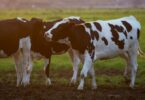Questions about Ficus benghalensis characteristics, importance, facts and structure:
What is a unique characteristic of the Banyan tree?
(a) It blooms only at night
(b) It sheds its leaves in the winter
(c) It has aerial roots that grow into the ground
(d) It is a carnivorous plant
The Banyan tree (Ficus benghalensis) belongs to which botanical family, known for its unique growth habits?
(a) Fabaceae
(b) Solanaceae
(c) Moraceae
(d) Rosaceae
Where is the native region believed to be the origin of the Banyan tree?
(a) South Africa
(b) Chile
(c) India
(d) Australia
Which type of climate is most suitable for the growth of Ficus benghalensis?
(a) Arctic
(b) Desert
(c) Tropical and subtropical
(d) Alpine
In which region is the Banyan tree (Ficus indica) considered sacred and often used as a place for meditation and worship?
(a) Sahara Desert
(b) Amazon Rainforest
(c) Himalayan Mountains
(d) Australian Outback
Which of the following is a famous historical Banyan tree that is often regarded as one of the largest by canopy coverage?
(a) Eiffel Banyan
(b) Central Park Banyan
(c) Bodhi Tree
(d) Great Barrier Banyan
Apart from Asia, in which of the following continents are Ficus indica also found?
(a) Australia
(b) Antarctica
(c) South America
(d) Europe
Which city in Thailand is famous for its iconic Banyan tree-lined street?
(a) Bangkok
(b) Chiang Mai
(c) Phuket
(d) Pattaya
Which type of Banyan tree is known for its unique habit of growing on other trees or structures?
(a) Weeping Banyan (Ficus benjamina)
(b) Strangler Fig (Ficus aurea)
(c) Indian Banyan (Ficus benghalensis)
(d) Rubber Fig (Ficus elastica)
Related: Quiz about Dinosaur
What is the primary method by which a Banyan expands its growth and canopy?
(a) Sending out underground runners to new locations
(b) Growing specialized aerial roots that reach the ground
(c) Releasing spores that develop into new trees
What is the significance of the scientific name, Ficus benghalensis?
(a) It refers to its ability to produce fragrant flowers
(b) It indicates that it originated in Bengal, India
(c) It highlights its resistance to pests and diseases
In Thailand, the Banyan tree is often associated with spiritual significance and is commonly found near what type of establishments?
(a) Shopping malls
(b) Beach resorts
(c) Buddhist temples
(d) Nightclubs
Which religious leader is said to have attained enlightenment under the shade of a Banyan tree?
(a) Moses
(b) Jesus Christ
(c) Gautama Buddha
(d) Prophet Muhammad
In which Southeast Asian country is the “Banyan Tree Temple” located?
(a) Thailand
(b) Finland
(c) Mangolia
(d) Cambodia
Which species of Banyan tree is native to Australia?
(a) Sacred Fig
(b) Cluster Fig
(c) Moreton Bay Fig
(d) Chinese Banyan
What is the traditional Thai belief associated with tying a small piece of cloth around the branches of a Banyan tree?
(a) To ward off evil spirits
(b) To encourage flower growth
(c) To make a wish come true
(d) To indicate tree’s age
What is the typical height range of a mature Banyan tree?
(a) 2-5 metres (6-16 feet)
(b) 10-15 metres (33-49 feet)
(c) 20-30 metres (66-98 feet)
(d) 50-75 metres (164-246 feet)
What is the scientific name of Chinese Banyan?
(a) Ficus religiosa
(b) Ficus racemosa
(c) Ficus macrophylla
(d) Ficus microcarpa
Which Banyan tree species is often cultivated as a popular indoor houseplant due to its attractive foliage and ease of care?
(a) Bo Tree (Ficus religiosa)
(b) Weeping Banyan (Ficus benjamina)
(c) Giant Banyan (Ficus virens)
(d) Indian Banyan (Ficus benghalensis)
What is a unique characteristic of the Banyan fig’s fruit?
(a) It is toxic and harmful to animals
(b) It has a distinctive hexagonal shape
(c) It is bright blue when ripe
(d) It grows underground instead of on branches
Where is the Great Banyan tree located?
(a) Amazon Rainforest
(b) Sahara Desert
(c) Central Park, New York
(d) Indian Botanical Garden, Kolkata
How does a Banyan tree acquire nutrients and moisture from its surroundings?
(a) Through its large leaves that capture sunlight
(b) By consuming insects and small animals
(c) Through its aerial roots that absorb water and nutrients from the air and ground
(d) By forming symbiotic relationships with fungi
Which ancient religious text mentions the Banyan tree as a sacred tree with spiritual significance?
(a) The Iliad
(b) The Bible
(c) The Quran
(d) The Bhagavad Gita
Approximately how many square metres does the canopy of the Great Banyan tree cover?
(a) 100 square metres
(b) 500 square metres
(c) 1,000 square metres
(d) 2,000 square metres






